
Mechanical engineering is the study of physical machines that may involve force and movement. It is an engineering branch that combines engineering physics and mathematics principles with materials science, to design, analyze, manufacture, and maintain mechanical systems. It is one of the oldest and broadest of the engineering branches.

Naval architecture, or naval engineering, is an engineering discipline incorporating elements of mechanical, electrical, electronic, software and safety engineering as applied to the engineering design process, shipbuilding, maintenance, and operation of marine vessels and structures. Naval architecture involves basic and applied research, design, development, design evaluation (classification) and calculations during all stages of the life of a marine vehicle. Preliminary design of the vessel, its detailed design, construction, trials, operation and maintenance, launching and dry-docking are the main activities involved. Ship design calculations are also required for ships being modified. Naval architecture also involves formulation of safety regulations and damage-control rules and the approval and certification of ship designs to meet statutory and non-statutory requirements.
The field of strength of materials typically refers to various methods of calculating the stresses and strains in structural members, such as beams, columns, and shafts. The methods employed to predict the response of a structure under loading and its susceptibility to various failure modes takes into account the properties of the materials such as its yield strength, ultimate strength, Young's modulus, and Poisson's ratio. In addition, the mechanical element's macroscopic properties such as its length, width, thickness, boundary constraints and abrupt changes in geometry such as holes are considered.
Mechatronics engineering, also called mechatronics, is an interdisciplinary branch of engineering that focuses on the integration of mechanical engineering, electrical engineering, electronic engineering and software engineering, and also includes a combination of robotics, computer science, telecommunications, systems, control, automation and product engineering.
Solid mechanics is the branch of continuum mechanics that studies the behavior of solid materials, especially their motion and deformation under the action of forces, temperature changes, phase changes, and other external or internal agents.
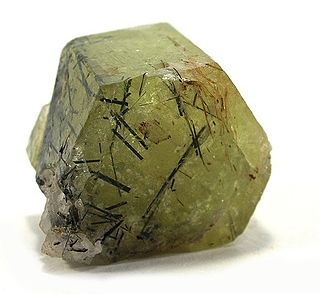
In mineralogy, an inclusion is any material trapped inside a mineral during its formation. In gemology, it is an object enclosed within a gemstone or reaching its surface from the interior. According to James Hutton's law of inclusions, fragments included in a host rock are older than the host rock itself.

Flexural strength, also known as modulus of rupture, or bend strength, or transverse rupture strength is a material property, defined as the stress in a material just before it yields in a flexure test. The transverse bending test is most frequently employed, in which a specimen having either a circular or rectangular cross-section is bent until fracture or yielding using a three-point flexural test technique. The flexural strength represents the highest stress experienced within the material at its moment of yield. It is measured in terms of stress, here given the symbol .

A material is a substance or mixture of substances that constitutes an object. Materials can be pure or impure, living or non-living matter. Materials can be classified on the basis of their physical and chemical properties, or on their geological origin or biological function. Materials science is the study of materials, their properties and their applications.
John Fleetwood Baker, Baron Baker, was a British scientist and structural engineer.
Material selection is a step in the process of designing any physical object. In the context of product design, the main goal of material selection is to minimize cost while meeting product performance goals. Systematic selection of the best material for a given application begins with properties and costs of candidate materials. Material selection is often benefited by the use of material index or performance index relevant to the desired material properties. For example, a thermal blanket must have poor thermal conductivity in order to minimize heat transfer for a given temperature difference. It is essential that a designer should have a thorough knowledge of the properties of the materials and their behavior under working conditions. Some of the important characteristics of materials are : strength, durability, flexibility, weight, resistance to heat and corrosion, ability to cast, welded or hardened, machinability, electrical conductivity, etc. In contemporary design, sustainability is a key consideration in material selection. Growing environmental consciousness prompts professionals to prioritize factors such as ecological impact, recyclability, and life cycle analysis in their decision-making process.

The concept of engineering has existed since ancient times as humans devised fundamental inventions such as the pulley, lever, and wheel. Each of these inventions is consistent with the modern definition of engineering, exploiting basic mechanical principles to develop useful tools and objects.
Rayleigh waves are a type of surface acoustic wave that travel along the surface of solids. They can be produced in materials in many ways, such as by a localized impact or by piezo-electric transduction, and are frequently used in non-destructive testing for detecting defects. Rayleigh waves are part of the seismic waves that are produced on the Earth by earthquakes. When guided in layers they are referred to as Lamb waves, Rayleigh–Lamb waves, or generalized Rayleigh waves.
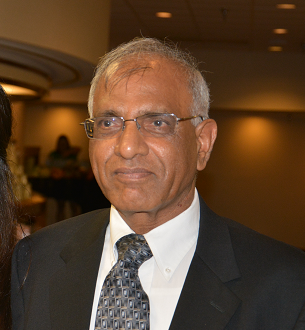
Junuthula N. Reddy is a Distinguished Professor, Regent's Professor, and inaugural holder of the Oscar S. Wyatt Endowed Chair in Mechanical Engineering at Texas A&M University, College Station, Texas, USA.[1] He is an authoritative figure in the broad area of mechanics and one of the researchers responsible for the development of the Finite Element Method (FEM). He has made significant seminal contributions in the areas of finite element method, plate theory, solid mechanics, variational methods, mechanics of composites, functionally graded materials, fracture mechanics, plasticity, biomechanics, classical and non-Newtonian fluid mechanics, and applied functional analysis. Reddy has over 620 journal papers and 20 books and has given numerous national and international talks. He served as a member of the International Advisory Committee at ICTACEM, in 2001 and keynote addressing in 2014.[2][3]
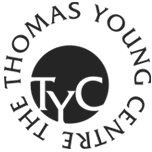
The Thomas Young Centre (TYC) is an alliance of London research groups working on the theory and simulation of materials (TSM). It is named after the celebrated scientist and polymath Thomas Young (1773–1829), who lived and worked in London and is known in the world of science for a number of important discoveries concerning the wave nature of light, the theory of vision, the elastic properties of solids, and the theory of surface tension. The participating research groups are based mainly at Imperial College London, King's College London, Queen Mary University of London (QMUL) and University College London (UCL), but there are also members at the National Physical Laboratory in Teddington. The aims of the TYC are to foster collaboration between TSM research groups in London, to provide a world-class source of graduate education in the field, and to address problems of major importance to industry and society. The current (2009) membership of TYC numbers about 80 research groups, of which six are led by Fellows of the Royal Society.
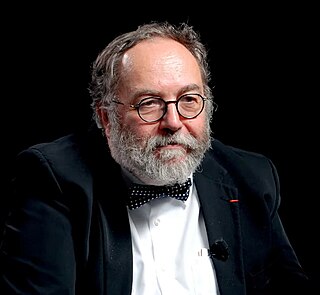
Yves Bréchet is a physicist, specialist of materials science, former High Commissioner for Atomic Energy of France, current Scientific Director of Saint Gobain, professor (part-time) at Monash University, and a member of the French Academy of Sciences.
Radiation materials science is a subfield of materials science which studies the interaction of radiation with matter: a broad subject covering many forms of irradiation and of matter.
A snap-fit is an assembly method used to attach flexible parts, usually plastic, to form the final product by pushing the parts' interlocking components together. There are a number of variations in snap-fits, including cantilever, torsional and annular. Snap-fits, as integral attachment features, are an alternative to assembly using nails or screws, and have the advantages of speed and no loose parts. Snap-fit connectors can be found in everyday products such as battery compartment lids, snap fasteners and pens.
Most of the terms listed in Wikipedia glossaries are already defined and explained within Wikipedia itself. However, glossaries like this one are useful for looking up, comparing and reviewing large numbers of terms together. You can help enhance this page by adding new terms or writing definitions for existing ones.
Lorna Jane Gibson is an American materials scientist and engineer currently the Matoula S. Salapatas Professor of Materials Science and Engineering at Massachusetts Institute of Technology.
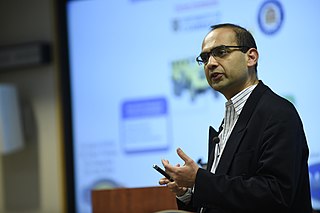
Vikram Sudhir Deshpande, is an Indian-born British engineer and materials scientist, currently Professor of Materials Engineering in the Department of Engineering at the University of Cambridge.










